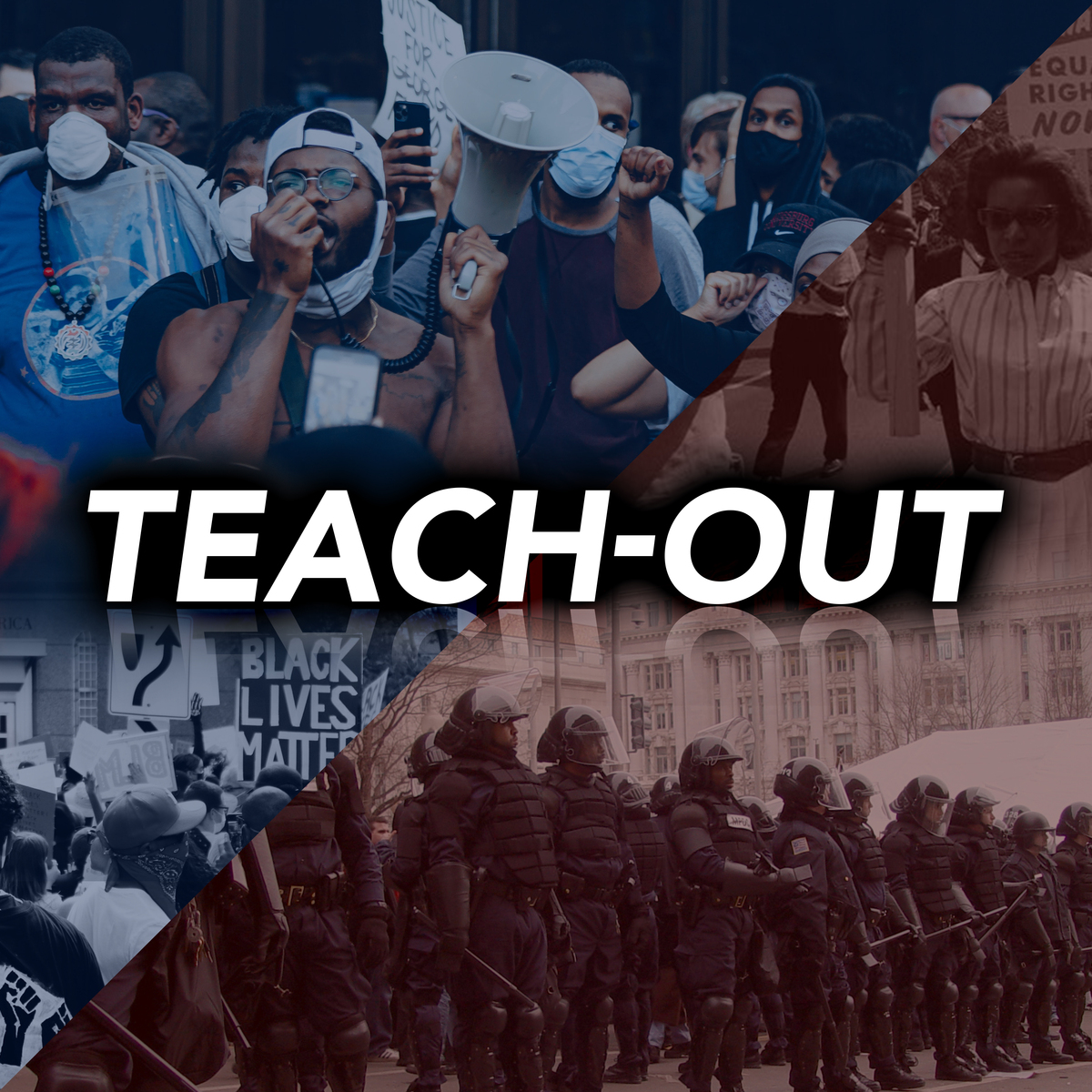Policing in Schools
This video explores how zero-tolerance disciplinary policies and the presence of police in schools disadvantage students of Color.
Excerpt From

Transcript
Police in schools. Dependent upon your age, hearing about police in schools may sound very familiar or very foreign. Whenever I think about police in schools, I think it is important to lay some groundwork. In terms of where we are now, about two-thirds of high schools have police in school, 45 percent of middle schools, and about 20 percent of elementary schools. This really started to come about in the 1990s. It's important to understand that what was happening outside of schools mattered to what was happening inside of school. This is the time when the war on drugs, mandatory minimums started to happen, and people got tougher on crime. In the early 1990's, Clinton passed a Gun-Free School Zone Act. What that act did was it took some of the tools of criminal justice and moved them inside of the school house, and what emerged were zero-tolerance policies. Zero-tolerance policies were modeled after these criminal practices and criminal policy to try to suggest if someone has an infraction, if a child does something wrong, we have zero-tolerance. Now on its face, this for some meant that there was a greater amount of equity. That the punishments for misbehaving would be emitted out in a very equal fashion. However, the reality is that with the implementation of zero-tolerance policies, we saw them unevenly applied. What zero-tolerance policies at there worse often looks like are a kindergartener bringing a utensil to school to cut her lunch and ending up being suspended. It looks like small children being handcuffed and detained by police rather than actually doing things that are developmentally appropriate and actually connected to the safety and well-being of kids. So now when we looked at zero-tolerance policies and their impacts, we know that there are disparities in how people are suspended from school and detained. Black boys are three times as likely to be suspended from school as white boys. Black girls six times as likely to be suspended compared to white girls. These things show us evidence of disproportionate punishment. The research shows very clearly that black kids, latinx kids, native kids, don't behave differently than white and Asian American kids but they are punished differently. Well, this leads to a major problem. For me as a researcher, I'm often thinking about what are the best environments to have in our schools? The reality is that we have put police as a central portion of our schooling. I live in New York City, and right now in New York, there are approximately 5,200 police officers in schools. They're broken up between school resource officers and post-war traditional police officers. But it's important to understand that, the actual training to become a school resource officer is traditional police training, you're commissioned often through local police departments. If you look at what kind of specialized training that folks who are police who operate in schools get, if you look at the national recommendations from school resource officers, they suggest on top of going to police academy, that an officer who wants to work in schools should do an additional 40 hours of training. What that really tells us is that the police officers who are even in the most contact with our kids are often not trained to deal with the robust set of needs that come in. But they are trained to use the tactics that we know that often use violence, and use tactics that will connect our children more closely to the school-to-prison pipeline, like putting them into the juvenile justice system, and moving them into different forms of incarceration. When there are police present, we know that black kids, brown kids, native kids get a different set of experiences. But it's not just a police in school because there are other forms of technology that we should consider too, such as metal detectors and cameras. Folks like Carla Shedd have talked to us about the universal carceral apparatus, which means at any given moment we are being watched and surveilled to see if there is a misstep. While in some places like suburban schools that tend to be affluent and white, a surveillance camera may not get used, any moment it can be turned on to surveil lives and to try to punish and penalize folks. Maybe iPhone comes up missing in the locker room and then they start to look at the tape. These apparatuses have been deeply embedded in our schools from police to metal detectors to surveillance cameras, and we have to be very conscious of how these things can also lead to mistreatment and abuse. Not too long ago, there was a viral video of African-American girl in Spring Valley, South Carolina, being physically slammed inside of her school desk because she refused to come out. What we have to realize is that we've invested deeply in notions of security and disposed off actually understanding what children need. We have more investment in school security than we do in addressing food insecurity. We have to radically push back and ask, "What is it that our kids need?" In almost every city around the country, there are more police present than there are counselors. This is why you see in this moment a number of grassroots activists across a nation pushing back and saying, "We want cop free schools." Because they know that police themselves are not trained to be in that environment. Police also add to additional levels of harm and that there are far greater uses of these resources.